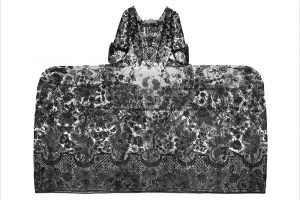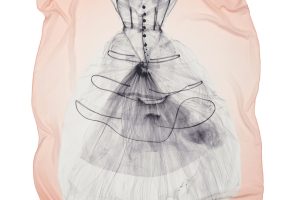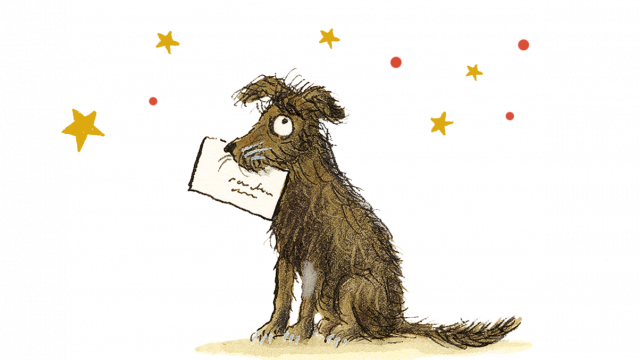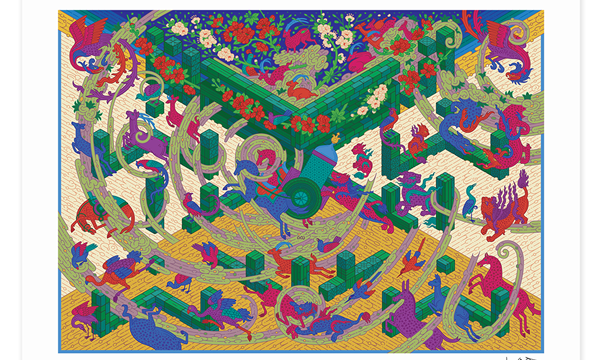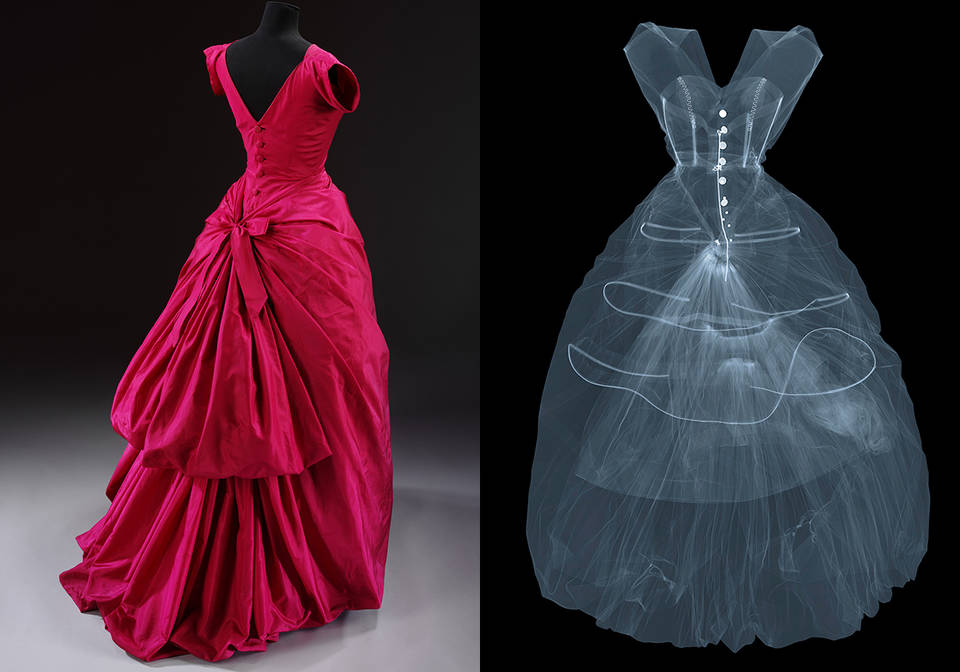
I’ve been thinking about the negatives buried in packs of photographs lately — floppy, opaque strips with sprocket holes running along the edges. Those strips fascinated me as a kid.
X-ray artist Nick Veasey prompted this jaunt down memory lane. His images of cameras from the 19th century to the mid-1960s are (for me, anyway) reminiscent of camera negatives. Their effect is haunting. They showcase the technologies at play, which — like a photograph — are frozen in time.
Since 2016, Veasey’s been a prominent fixture at the V&A. He’s worked with us on exhibitions like Balenciaga: Shaping Fashion (2017) and Fashioned from Nature (2018), and produced exclusive and limited edition prints for the V&A Shop.
I put eight questions to Nick about the origins of his practice, his methods, and his fondest memories of the V&A.
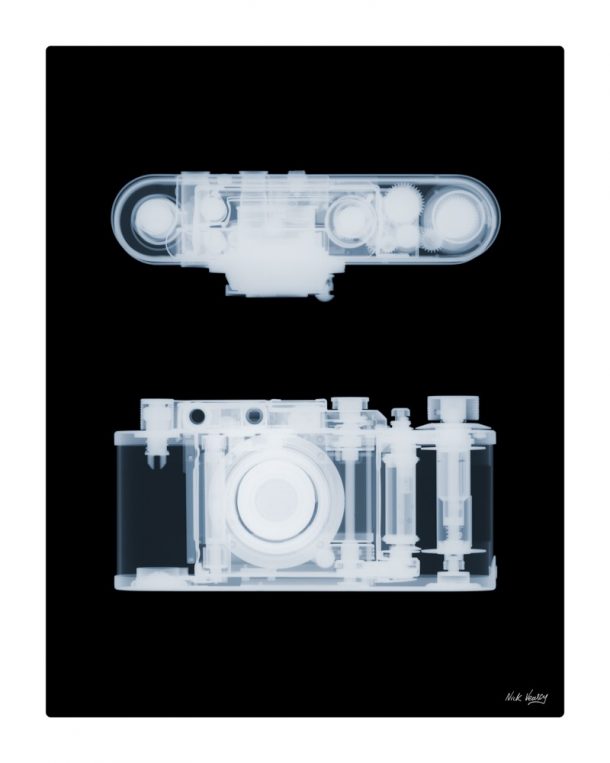
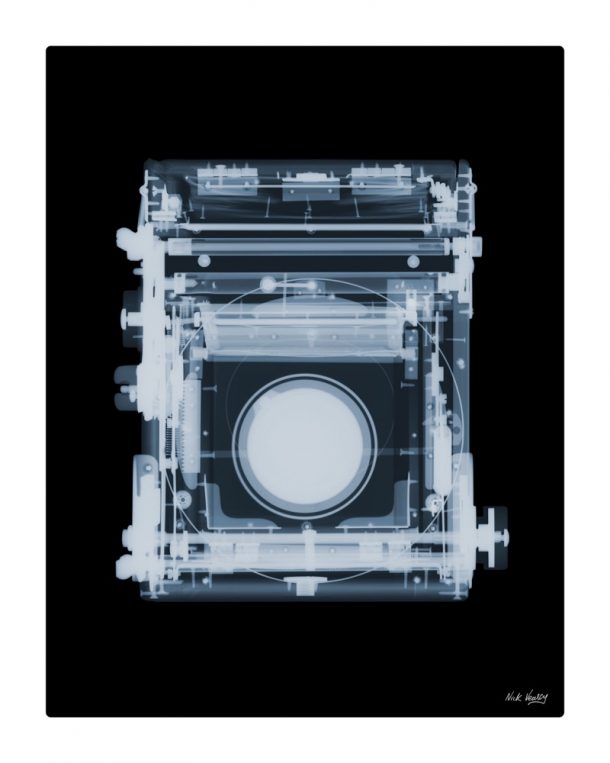
Did you receive formal training in art or photography? And if so, how did it prepare you for your career as a photographer?
I have no formal training in anything really. I’m an autodidact and that could be my biggest strength. Finding my own path through experimentation has given me a career and a catalogue of works I’m proud of. What I’m doing is a bit different to most photographers; there is no manual that I can follow. Not that I would follow a manual if there was one.
Was there a life-changing moment that inspired you to become an X-ray artist? I read online that it involved a can of Coke…
I think seeing Dr. Albert Richards’ beautiful flower X-rays was a life-changing moment. I was taken aback by their beauty and ephemeral qualities. When the opportunity to X-ray a can of Cola came along, it was my calling — I just didn’t realise it at the time.
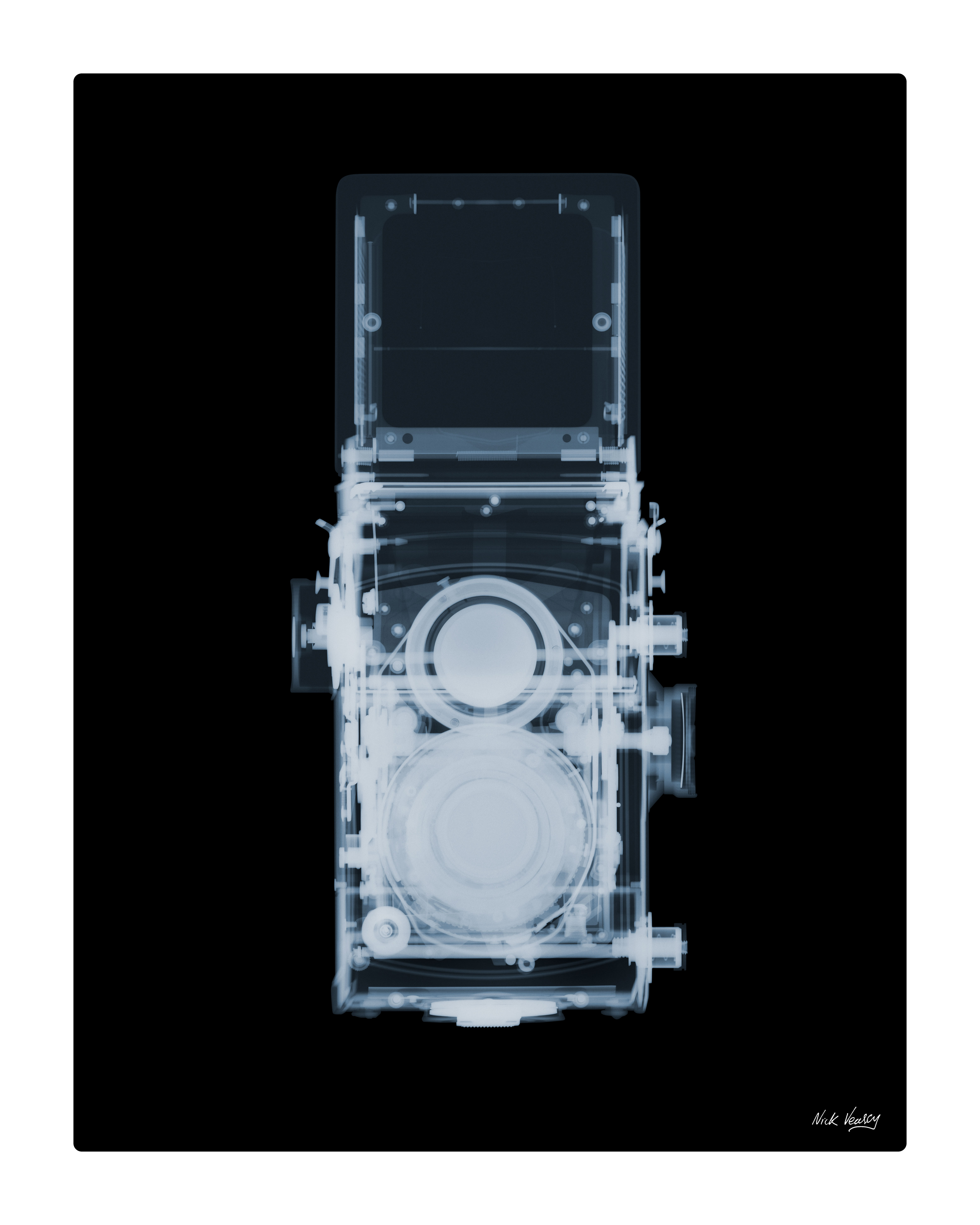
Once you decided to work with X-rays, how did you perfect your technique? Did you work with anyone in particular?
Initially I hired time on X-ray machines and learnt an awful lot from radiographers who showed me how to use the equipment. I found two people who were really enthusiastic about what I was doing (Lesley and Jamie), and I thank them deeply for their guidance. Hiring X-ray equipment was limiting, as the process is slow and time consuming. So building my own X-ray ‘bunker’ was a significant step as I could experiment more and work on improving that technique.
https://youtu.be/-p-2aDOj-54
Certain objects you’ve X-rayed in our collection are extremely delicate. How do you go about X-raying these types of objects (and does this change from one item to the next)?
The general approach and method of working is fairly consistent, but we have to be resourceful as the X-ray process has limitations. X-raying delicate objects such as fine material in fashion is extremely challenging. The soft fibres in the Balenciaga Ostrich Feather Hat were really tough to image, but the results pleased me.

What’s the most unusual discovery you’ve made X-raying an object?
We found tiny crabs living inside seaweed; you can work out what a fish eats; the restoration team at the V&A leave pins in places they shouldn’t.
Are there any new or emerging technologies that you’d like to experiment with?
Indeed. I’d love to work with full body X-ray scanning and large CT scanners. I’d also like to revisit some of the old analogue photographic processes. The magic of photography has been lost with digital, and making unique direct X-ray prints with the older chemical formulas excites me.
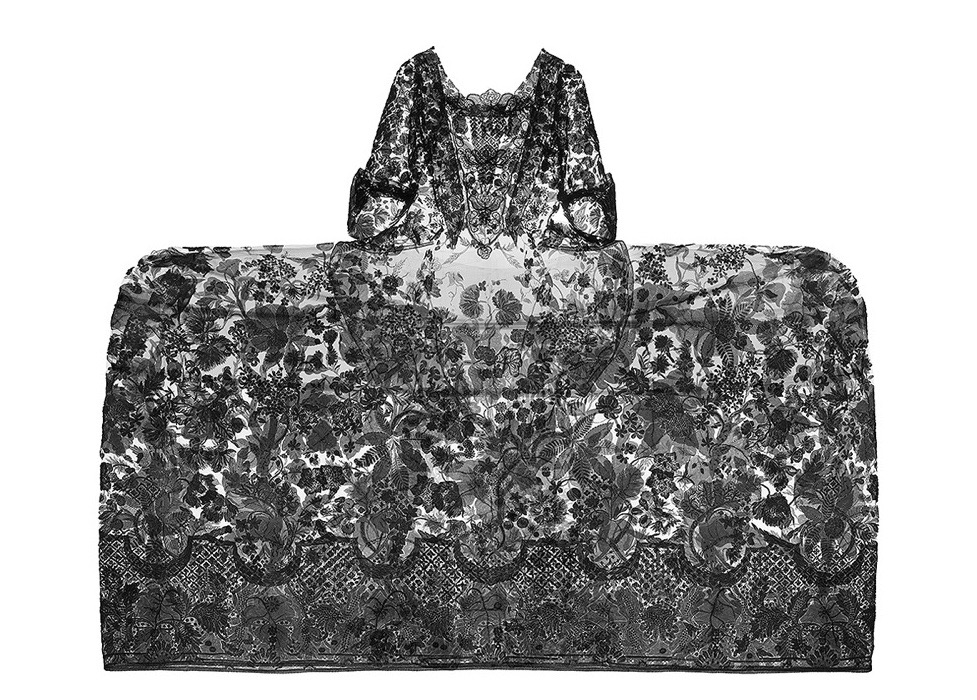
Tell us how you started working with the V&A, and how this led to you working with the V&A Shop.
The Photography Curator, Susanna Brown, was very supportive and genuinely interested in what I was doing with X-rays. We started talking about my ambitions with other projects and I mentioned my desire to cover the fashions that were popular in my youth. Susanna then introduced me to the Fashion Curator, Oriole Cullen, and the project sort of expanded into a real collaboration with the V&A Fashion and Textiles department where I made X-ray artworks that spanned a variety of important items in the collection.
To realise the ambitions of the collaboration I had to find a way to bring my X-ray studio into the museum grounds. This resulted in a mobile X-ray studio in a converted truck trailer.
This involved a significant investment on my part and I guess the V&A Shop were sympathetic, and decided to turn the works into beautiful things for the shop — another enjoyable collaboration!

Do you have a favourite memory of the V&A? Alternatively, what is your favourite object in the collection?
Seeing my X-ray studio in a truck trailer pulling in through the gates of Blythe House is my favourite memory.
It captured our joint sense of adventure and innovation and happened before my eyes. Object-wise, my favourite piece has to be the Mantua.
